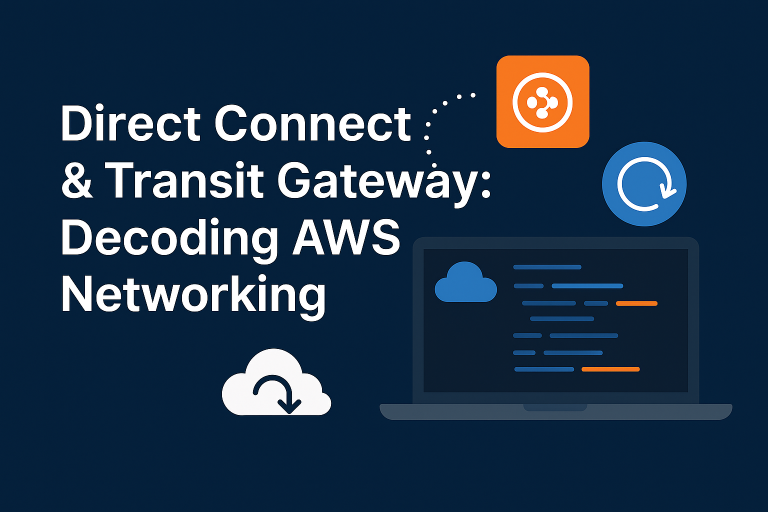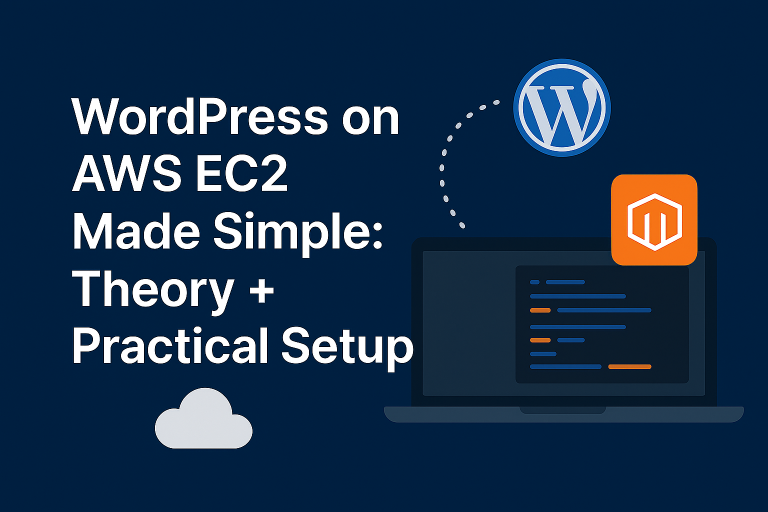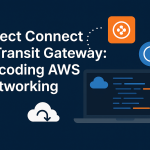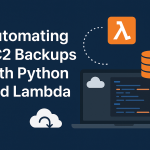In today’s cloud-driven world, businesses require applications that can scale quickly, run seamlessly anywhere, and remain reliable. That’s where containers come in — they package your app with everything it needs, making it portable and consistent across environments. AWS ECS (Elastic Container Service) plays a key role here, helping organizations run and manage these containers efficiently in the cloud.
But managing hundreds of containers manually is a challenge. This is where Amazon Elastic Container Service steps in. ECS takes care of running, scaling, and managing containers for you, so teams can focus on building apps instead of handling infrastructure.
AWS ECS Overview
It is a fully managed service that helps you run and scale containerized applications on AWS. At its core, ECS organizes your containers into clusters, defines how they should run, and ensures they remain healthy.
In the next sections, we’ll break this down into simple parts — clusters, tasks, and services — so you can clearly see how ECS works under the hood.
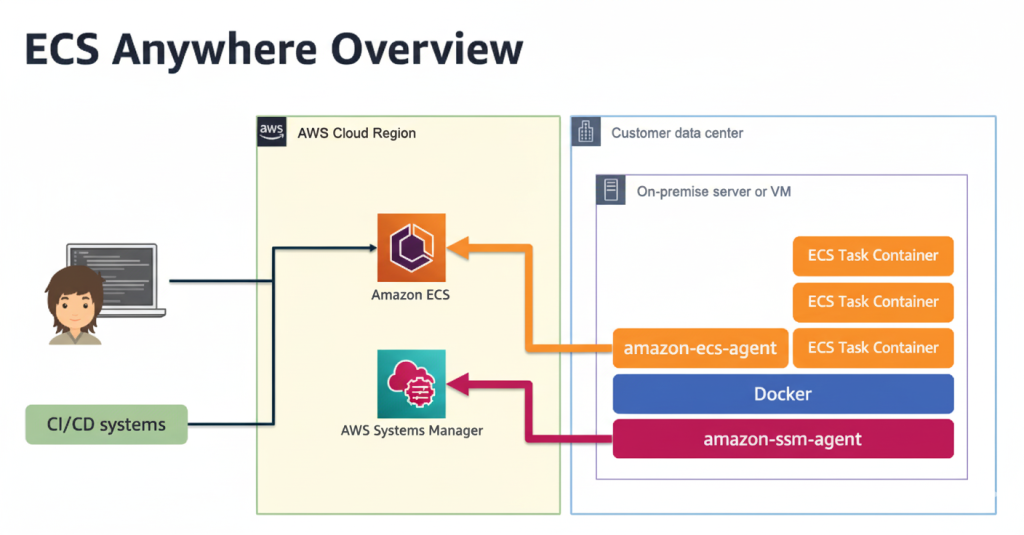
What You’ll Learn?
By the end of this post, you’ll understand:
- What AWS ECS is and why it’s used.
- How it works — clusters, tasks, and launch types.
- What cluster patching means?
- Who handles patching (AWS vs you)?
- Why patching is critical for security and stability.
What is AWS ECS?
Amazon Elastic Container Service is a fully managed service that helps you run and scale Docker containers on AWS. Instead of worrying about provisioning servers and managing container workloads manually, it handles the heavy lifting.
Teams use ECS because it offers:
- Scalability – run from one container to thousands.
- Simplicity – no need to manage complex infrastructure.
- Seamless AWS integration – works smoothly with services like IAM, CloudWatch, and ALB.
In short, ECS enables faster and easier container management, while also providing tight integration with the AWS ecosystem.
How ECS works — clusters, tasks, and launch types
ECS may seem complex at first, but it really boils down to three main parts: clusters, tasks, and launch types.
1. Clusters
A cluster is a pool of resources where your containers reside. This pool can consist of:
- EC2 instances (your own servers that you manage and update).
- Fargate (serverless computing where AWS manages the servers for you).
2. Tasks
A task is the running container inside ECS. It’s defined by a task definition, which acts like a recipe. It tells ECS which container image to use, how much CPU and memory it needs, and which ports to expose.
3. Launch Types
This simply refers to how your tasks run:
- EC2 Launch Type: Containers run on your EC2 instances within the cluster.
- Fargate Launch Type: Containers run without servers; AWS provides the computing power for you.
🔑In summary, it schedules your tasks inside a cluster using the selected launch type, and then manages their health, scaling, and connectivity.
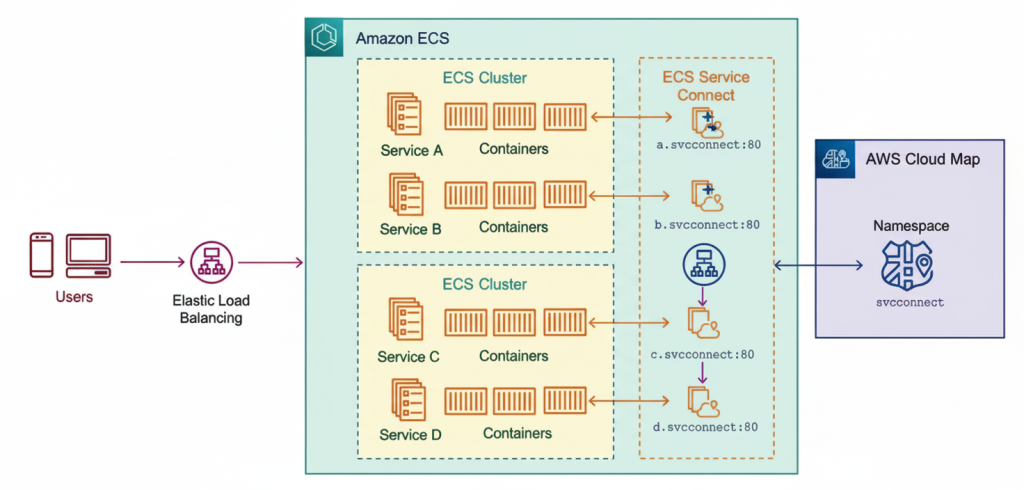
What cluster patching means in ECS
When you run containers on ECS, the word patching refers to keeping the underlying infrastructure up to date and secure.
- If you’re using the EC2 launch type, your ECS cluster is made up of EC2 instances. These servers need regular updates — like operating system patches, ECS agent updates, and security fixes. Without patching, your containers run on outdated, potentially vulnerable machines.
- If you’re using the Fargate launch type, AWS takes care of patching the underlying servers for you. But you still need to patch your container images to make sure the software inside them (like libraries and dependencies) is secure.
👉 In short: Cluster patching = keeping the foundation your containers run on healthy and secure — whether that responsibility falls on AWS (Fargate) or on you (EC2).
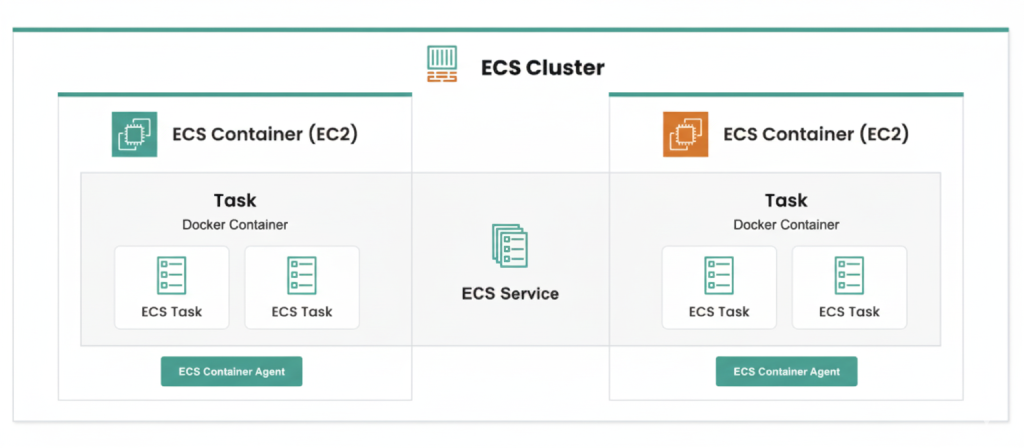
Who handles patching (AWS vs you)?
One of the biggest sources of confusion in ECS is understanding who is responsible for patching what. Here’s the breakdown:
With Fargate
- AWS manages the infrastructure behind the scenes.
- The servers, networking, and ECS agent are patched automatically.
- Your job is to keep your container images updated with the latest libraries, runtimes, and app dependencies.
With EC2 launch type
- You own the EC2 instances in the cluster.
- That means you are responsible for patching the OS, ECS agent, and any security updates.
- AWS’s job is to provide ECS as the orchestration layer and offer the updates; however, you must apply them.
Why patching is critical for security and stability
Patching is a vital part of maintaining any computing environment, including ECS clusters. Here’s why it matters:
- Protects Against Security Vulnerabilities
Software and operating systems often have vulnerabilities that can be exploited by attackers. Regular patching ensures that known security flaws are fixed, reducing the risk of unauthorized access, data breaches, or ransomware attacks. - Ensures System Stability
Patches often include bug fixes and performance improvements. By applying them, you prevent crashes, unexpected behavior, and service disruptions, keeping your applications running smoothly. - Maintains Compatibility
Updates ensure that your ECS cluster and associated services remain compatible with new features, APIs, or AWS updates. This helps avoid issues when integrating new services or scaling workloads. - Compliance and Best Practices
Many industries have strict security and compliance requirements. Regular patching ensures your environment meets these standards, which is crucial for audits and regulatory compliance.
In short, patching is not just a routine task—it’s essential for security, reliability, and long-term efficiency of your ECS clusters.
Best Practices for AWS ECS
- Choose the Right Launch Type
- Use Fargate for serverless simplicity or EC2 for more control and cost optimization.
- Keep Containers Updated
- Regularly update container images and patch underlying instances to fix vulnerabilities and improve stability.
- Monitor and Log Everything
- Use CloudWatch Logs and Container Insights to track performance, errors, and resource usage.
- Secure Your Cluster
- Use IAM roles for tasks, enable encryption, and follow the principle of least privilege.
- Use Smart Deployment Strategies
- Implement rolling or blue/green deployments with health checks to ensure zero downtime and smooth updates.
Case Studies: ECS Patching in Action
1. E-Commerce Platform
An online store runs its web application on an ECS cluster. A critical security vulnerability is discovered in the underlying OS. Because the cluster was regularly patched, the platform updated instances quickly without downtime, protecting customer data and avoiding potential financial loss.
2. Microservices-Based SaaS
A SaaS company uses ECS to deploy multiple microservices. One unpatched container instance caused intermittent service failures, affecting several users. After implementing a regular patching routine, the team ensured all instances were up-to-date, improving reliability and user experience.
3. Finance Sector Compliance
A financial services firm must comply with strict data security regulations. Regular ECS cluster patching helps them meet audit requirements, secure sensitive customer information, and avoid regulatory penalties, all while keeping services stable and responsive.
Conclusion
Maintaining your ECS clusters through regular patching is essential for security, stability, and compliance. While understanding the theory behind patching is the first step, seeing its impact in real-world scenarios shows why it cannot be ignored. By following best practices—like keeping container images updated, monitoring performance, and securing your cluster—you can ensure your applications run smoothly and safely.
At Cloud Jiva, we aim to bring you easy-to-understand guides and practical insights on AWS and cloud technologies. Stay tuned for our next blog, where we’ll dive deeper into ECS with hands-on examples and real-world use cases!


